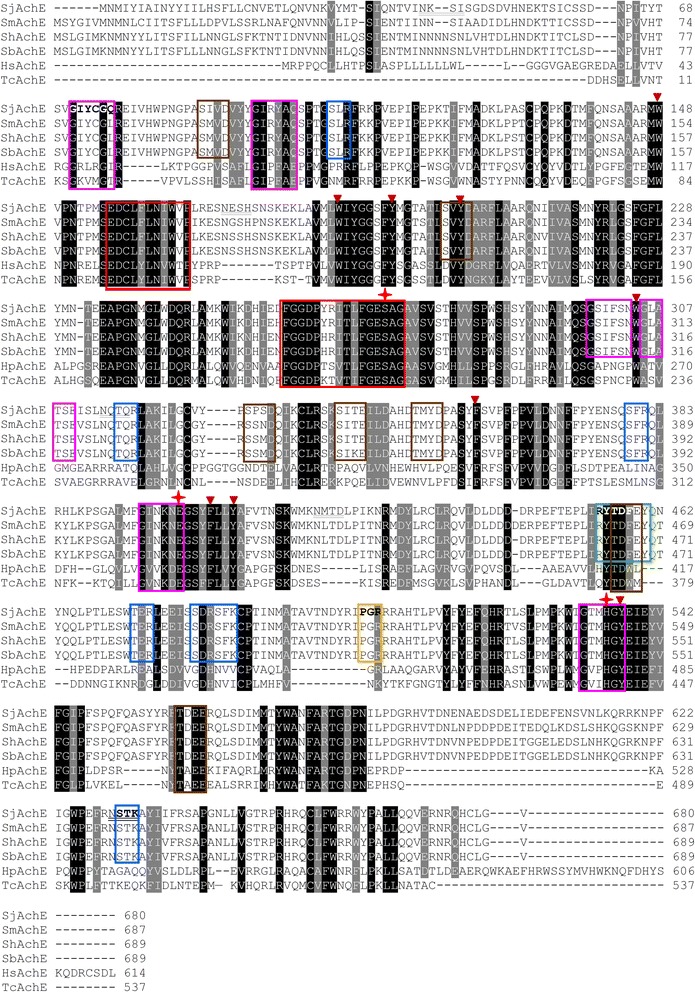Fig. 2.

Alignment of acetylcholinesterases from S. mansoni, S. haematobium, S. bovis, Homo sapiens and T. californica. Red boxes indicate the two conserved subdomains including carboxylesterase type-B signature 2 (E156-P166) and carboxylesterase type-B serine active site (F258-G273). Several motifs are found in SjAChE: N-glycosylation sites underlined (N42-I45, N171-H174, N314-Q317, N418-D421, N630-K633); N-myristoylation sites boxed in purple (G71-Q76, G95-Q100, G298-N303, G305-E310, G395-E400, G532-Y537); Casein kinase II phosphorylation site boxed in brown (S88-D91, S200-D203, S329-D332, S341-E344, T351-D354, T456-E459, S471-E474, T559-E562, T592-E595); Protein kinase C phosphorylation sites boxed in blue (S105-R107, T316-R318, S379-R381, T473-R475, S481-K486, S631-K633) which are specific for schistosome; Tyrosine kinase phosphorylation site boxed in green (R454-Y460); amidation site (P503-R506). The conserved catalytic active catalytic triad site is observed S. japonicum (S280-H54-E327, in red stars), while the 9 residues (W148, W186, W193, Y202, W304, F371, F404, Y407, Y537, in dark red triangles) in the rings of 14 aromatic amino acid residues of T. californica AChE are conserved in the appropriate locations in S. japonicum AChE. The coloured boxes which covered only sequences from four species of schistosomes indicated the specific motifs for schistosome. Note: AChE from S. mansoni (SmAChE), S. haematobium (ShAChE), S. bovis (SbAChE), Homo sapiens (HsAChE) and T. californica (TcAChE)
